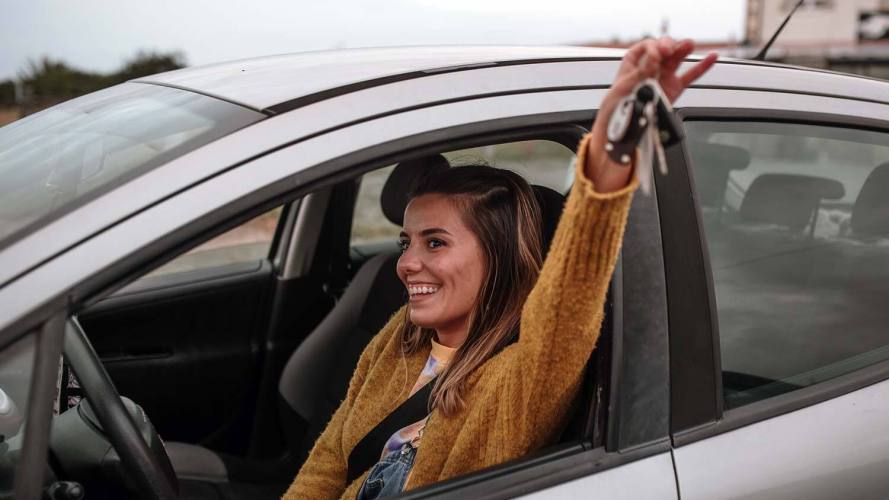Buying a Car Won’t Be This Hard Forever — But It Will Be Different



Chip shortages and supply-chain issues are making headlines now, but there are bigger shifts coming down the road. Here’s what the future of car-buying really looks like.
Supply-chain challenges, microchip shortages, and the continued threat of COVID-19 have changed the automotive industry over the last 18 months. With millennial and Gen-Z consumers overtaking the market, there is more upheaval ahead.
While the ripple effects of the pandemic will eventually subside, the car-buying experience has forever changed. Fifty percent of car buyers now begin their journey online. They expect more from their experience and don’t want to haggle with a sales associate. Instead, they want the ability to personalize their cars and services and move seamlessly between in-person and digital channels.
What does that mean for the future of car buying? Here’s what auto leaders can expect.
Omni-channel experiences will become the new battleground
The dealership will always be central to the experience, but it’s only a piece of the puzzle. When consumers start their journey, they research their options, read reviews, discuss options on social platforms, and watch videos. There was a 39% year-on-year increase in automotive watch time on YouTube in May 2020 alone. And auto dealers miss roughly 78% of social conversations about their business.
Once they narrow down their choices, they visit the dealership for a test drive. They may sign on the dotted line in person with the sales associate, or go home to weigh their options and opt for online car-buying instead. They may even pre-order a car that isn’t available yet.
Adapting to an assortment of omni-channel behaviors like these takes more than partnering with a third-party vendor to sell your inventory online. (While working with these brands is a great option to extend your reach, they take a piece of your profits and won’t share critical customer data with you.)
Instead, use your digital channels as a way to augment the dealer experience. Go beyond your content management system (CMS) to embed commerce capabilities that offer fast site speeds and an engaging user experience. While beautiful images of your vehicles on your CMS will always pull consumers in, they don’t enable the end-to-end journey that you need with a powerful ecommerce solution.
Re-route your digital experience with Salesforce Commerce Cloud
Easily integrate scalable commerce services like AI personalization, search, SEO, marketing, and more into a purpose-built digital experience.



Customers will demand shorter buying cycles
If you’re old enough to remember going to different dealerships to learn about all of your car options, then you know it could take up your entire Saturday. Now, online-only newcomers such as TrueCar and Carvana are gaining market share. More digital-first dealers are sure to follow. This spells trouble for dealers if they don’t expedite the buying process.
To shorten the sales cycle, add digital engagement tools to your online experience. Leverage your car configurator to understand a shopper’s preferences and drive personalization. Provide on-demand access to schedule test drives or allow customers to chat with a dealer in real time. And give them the ability to initiate the car-financing process from a single platform.
We also know that an inventory shortage has led to steep competition for new and used cars. Be sure to include the ability to pre-order or reserve a car, which will become a bigger trend as demand and supply-chain issues persist. Brands such as Volkswagen Brazil have seen success doing this. When they recently launched the Taos model, they pre-sold 300 cars in seven minutes.
Personalization is key in online car-buying
Fifty-two percent of customers expect all offers to be personalized. In car buying, this translates to made-to-order vehicles and customized add-on products and services. Imagine getting a special cupholder in your car to fit your usual Starbucks order — or being able to buy new car accessories while you’re sitting in the parking lot.
Artificial intelligence (AI) works in a couple of ways to enable personalization based on customer needs and preferences. This includes:
- Predictive search. AI analyzes your data to understand search intent and sorts the most relevant results first, such as a certain kind of tire for your new car model.
- Product recommendations. Based on search behavior and similar customer profiles, you can suggest relevant products and add-on offerings, like an emergency service or a one-year complementary satellite radio subscription.
- Guided selling. Customers answer a series of questions that allow you to cross-sell and upsell complementary products, such as warranty options for a new vehicle.
Sustainability will be a competitive advantage
Ninety-eight percent of customers believe companies need to improve their environmental practices. In automotive, sustainability is a competitive advantage. Companies such as Lucid are leading the way in the electric space and are impacting how all manufacturers look at their product portfolio. For example, Mercedes said its fleet will be mostly, if not all electric by 2030.
But most automotive companies aren’t capturing the full opportunity of sustainability quite yet. It’s not just about adding an electric car to your lineup. Automotive companies also should take a look at their supply chain. How can they become carbon-neutral while building and assembling vehicles?
One way is to use solutions like Salesforce Sustainability Cloud Scope 3 Hub to track carbon emissions. This helps companies understand their emissions in less than a day, a project that would otherwise take weeks — if not months.
The new way to buy cars is online
Learn how to evolve your online car-buying experience to drive revenue with expert tips and advice.




























